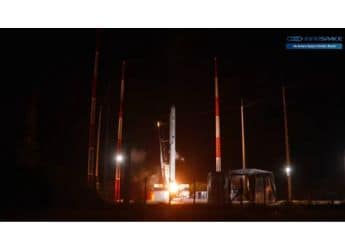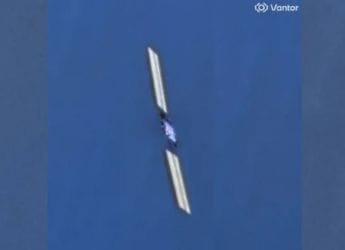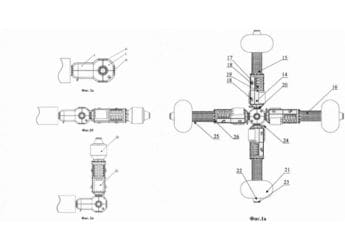- Home
- Science
- Science News
- NASA Aims to Deploy Nuclear Reactor on Moon by 2030 for Strategic Power
NASA Aims to Deploy Nuclear Reactor on Moon by 2030 for Strategic Power
NASA plans to install a 100-kW nuclear reactor on the Moon by 2030 to power a future base.

Photo Credit: NASA
NASA plans 100-kilowatt Moon reactor for 2030 lunar outpost
NASA's interim leader Sean Duffy recently declared the U.S. space agency aims to place a 100-kilowatt nuclear reactor on the Moon by 2030 to provide energy for an eventual lunar outpost. Duffy describes this as a new moon race to establish the strategic foothold and keep a competitive advantage for the U.S. During a press conference titled "Unleashing American Drone Dominance" , he emphasised the importance of having dependable power on the lunar surface. NASA moved up its new crew-rushed lunar lander by a full year as the agency scrambles to seize key resources on the moon and lay the groundwork for deeper exploration at least four years away.
According to the press conference, for exploration and a long-term Moon base, reliable power is crucial. Solar panels fail during the Moon's two-week-long nights, so a nuclear reactor could supply continuous electricity even in darkness. It would be especially valuable at the south pole, where permanent shadows hide water-ice deposits. These ice reserves are essential for life support and fuel, so steady power there would expand mission capabilities. Strategically, deploying a reactor would help secure key territory.
China and Russia plan to build one by the mid-2030s, and U.S. officials warn the first country to do so could effectively claim that region, creating a de facto “keep-out zone”. Duffy even called the south pole the Moon's “best” spot—rich in ice and sunlight—and said America must “get there first and claim that for America”.
Challenges
The directive sets near-term milestones. NASA must appoint a lunar reactor program manager within 30 days and solicit industry proposals within 60 days. The aim is a flight-ready 100 kW reactor by roughly 2030.
However, the plan faces major hurdles. The 2026 budget would allocate about $350 million to jump-start lunar fission power (rising to $500 M by 2027), but also proposes deep cuts to overall NASA funding. Observers note this would be NASA's smallest budget in decades. Meanwhile, the agency is trimming science programs and even its workforce.
Get your daily dose of tech news, reviews, and insights, in under 80 characters on Gadgets 360 Turbo. Connect with fellow tech lovers on our Forum. Follow us on X, Facebook, WhatsApp, Threads and Google News for instant updates. Catch all the action on our YouTube channel.
Related Stories
- Samsung Galaxy Unpacked 2025
- ChatGPT
- Redmi Note 14 Pro+
- iPhone 16
- Apple Vision Pro
- Oneplus 12
- OnePlus Nord CE 3 Lite 5G
- iPhone 13
- Xiaomi 14 Pro
- Oppo Find N3
- Tecno Spark Go (2023)
- Realme V30
- Best Phones Under 25000
- Samsung Galaxy S24 Series
- Cryptocurrency
- iQoo 12
- Samsung Galaxy S24 Ultra
- Giottus
- Samsung Galaxy Z Flip 5
- Apple 'Scary Fast'
- Housefull 5
- GoPro Hero 12 Black Review
- Invincible Season 2
- JioGlass
- HD Ready TV
- Laptop Under 50000
- Smartwatch Under 10000
- Latest Mobile Phones
- Compare Phones
- Huawei Nova 15
- Huawei Nova 15 Pro
- Huawei Nova 15 Ultra
- OnePlus 15R
- Realme Narzo 90x 5G
- Realme Narzo 90 5G
- Vivo S50 Pro Mini
- Vivo S50
- Asus ProArt P16
- MacBook Pro 14-inch (M5, 2025)
- Huawei MatePad 11.5 (2026)
- OnePlus Pad Go 2 (5G)
- Huawei Watch 10th Anniversary Edition
- OnePlus Watch Lite
- Acerpure Nitro Z Series 100-inch QLED TV
- Samsung 43 Inch LED Ultra HD (4K) Smart TV (UA43UE81AFULXL)
- Asus ROG Ally
- Nintendo Switch Lite
- Haier 1.6 Ton 5 Star Inverter Split AC (HSU19G-MZAID5BN-INV)
- Haier 1.6 Ton 5 Star Inverter Split AC (HSU19G-MZAIM5BN-INV)

















